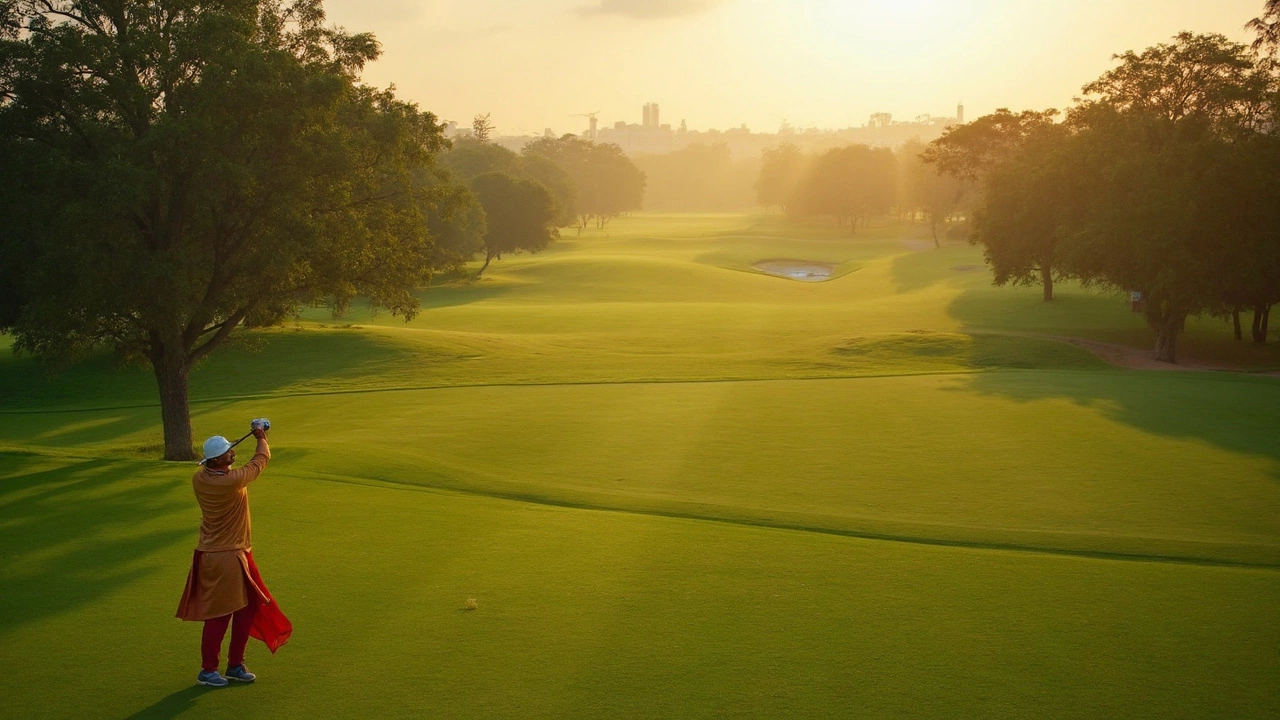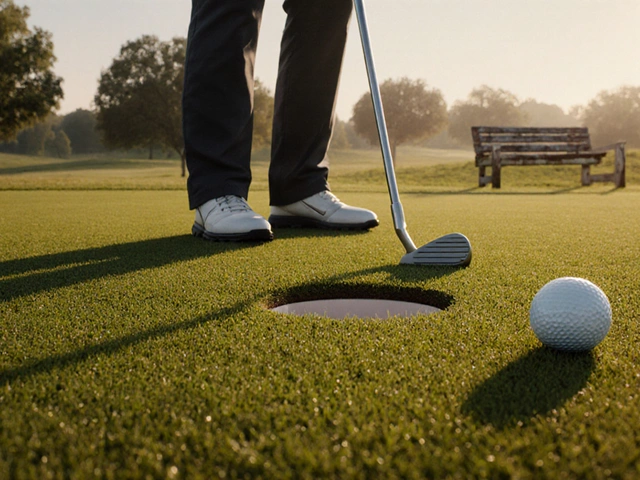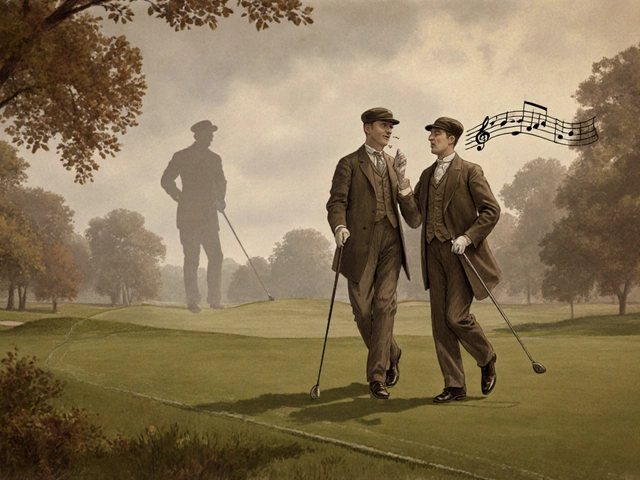So, you're out for a round on the links, watching that little white ball arc through the sky, and you might wonder, why 18 holes? It’s a right of passage for anyone curious about the game's quirks. Turns out, the answer isn’t as simple as you’d think.
The story starts back in Scotland, at the home of golf, St Andrews. Back in 1764, the Old Course was having a makeover. Originally, there wasn’t much consistency in how many holes a course had—it varied quite a bit. But St Andrews ended up with 18, and oh boy, did it set a trend.
Now, why exactly 18? Was it someone's lucky number? Not quite. A cool piece of trivia is that it's rumored the number was determined by how many shots it took to finish off a fifth of Scotch whisky, but don't quote me on that! It likely had more to do with the practicalities of the land and the tradition just stuck. All of a sudden, everyone wanted to play 18 holes. This set the tone for golf worldwide.
- The Origins of Golf
- Why Exactly 18 Holes?
- The St Andrews Influence
- Evolution of Golf Courses
- Interesting Facts About Golf Holes
- Modern-Day Golf Course Design
The Origins of Golf
Alright, let's wind back the clock a bit. The origins of golf have a bit of a hazy history, but most fingers point to Scotland in the 15th century. Picture this: rolling fields, folks with clubs hitting pebble-like balls, all along the natural terrain. Doesn’t sound too far off from today, right?
The Identity Crisis
Initially, golf didn’t have the snazzy reputation it has today. It was quite literally banned in 1457 by the Scottish Parliament because folks were too busy swinging clubs instead of practicing archery—crucial for defense back then.
Still, like any good rebel, the game persisted. By the 16th century, it gained popularity with royalty, even catching the keen eye of King James IV of Scotland. And that's always a good endorsement, right?
Spreading Across the Lands
As Scotland nudged golf into popularity, folks south of the border and other parts of Europe got intrigued. Courses started popping up in the Brit territories, eventually making their way overseas. By the 18th century, the game found itself comfortably nestled in the hearts of the elite across Europe.
Drive Toward Standardization
The game in its early days was anything but standard. Golf courses varied significantly in the number of holes. St Andrews had 12 until, in 1764, they formed a layout to play over 18 holes, setting a trend that others followed.
Despite its evolution, the spirit of golf stayed true to its roots. A little friendly competition, fresh air, and camaraderie—all things that made it cherished then and now.
Why Exactly 18 Holes?
So why did golf courses settle on 18 holes as the standard? The truth lies in both history and convenience. Initially, the number of holes varied with each golf course. In St Andrews, the golf history tale really takes off. Their Old Course once had 12 holes, but in 1764, they combined the first four short holes into two, resulting in the now-famous 18-hole format.
Interestingly, at the time, course layouts weren’t standardized like today. Course leaders just chose what seemed best for the land. But when St Andrews happened to choose 18, it eventually set the benchmark for other courses.
St Andrews: The Influencer
By the end of the 19th century, St Andrews was recognized as the leading authority, and more golf courses began adopting the 18-hole layout to align with them. This helped fuel a spread in the norm across the globe.
The layout stuck more for tradition than rigid reasoning. A little-known tidbit is that course stewards wanted the golf to last not too short, not too long, just right for a day out. And, as quirky as it may sound, the legend about the scotch bottles adds a charming if improbable backstory.
Standardization and Influence
Over time, especially by the 20th century, the standardization of the 18-hole course helped streamline professional golf tournaments, ensuring consistency and fairness in play. Soon enough, no one even thought twice about the number—it became the gold standard.
While not exactly a scientific formula, the journey to creating this golfing norm is a fascinating mix of tradition, influential choices, and a dash of humor that still intrigues golf fans today.
The St Andrews Influence
St Andrews, often dubbed the 'Home of Golf,' played a massive role in shaping the game we know today, especially with its enduring decision to feature 18 holes. But how did this famous golf course come to set this benchmark?
In the early days, courses like St Andrews had varying layouts. Originally, it had 22 holes in total. However, in 1764, a decision was made that the course should be streamlined for better playability. They decided to merge some shorter holes, eventually reducing the number to 18. This streamlined approach was more practical and soon started catching on.
Golf history has it that this change wasn't made with a grand plan to revolutionize the game but was more about optimizing the land they had and enhancing player experience. Yet, as St Andrews was already prestigious, people started copying it, making 18-hole rounds popular. It's kinda like when a top chef introduces a new dish, and suddenly every restaurant has their version of it.
Setting the Standard
As the sport grew internationally, the trend spread. By 1858, the Royal & Ancient Golf Club of St Andrews established 18 holes as the standard golf course length, cementing its place in golf history. Other clubs followed suit because, honestly, who doesn't want their course to be like the legendary St Andrews?
Today, while some courses have more or fewer, the 18-hole course remains the norm, and it all started with some practical adjustments at St Andrews.

Evolution of Golf Courses
Golf courses have come a long way since the first green was laid at St Andrews. In the early days, courses varied in length and the number of holes, leading to a somewhat chaotic experience. These days, a round of golf means tackling precisely 18 holes, thanks to the precedent set by the famous Scottish course.
The Early Days
In the beginning, courses were largely defined by the landscape. Early golfers used the natural contours of the land, which means no two courses were the same. It was quite literally a wild game. Players dealt with whatever nature threw their way—hills, rough patches, and a whole lot of sheep.
Standardization Emerges
Over time, as golf became more popular, there was a move towards standardizing the number of holes and the length of courses. This was driven by the desire for consistency in the competitive play. By the early 20th century, most courses around the world had adopted the 18-hole layout.
Innovations in Course Design
Modern architects have made use of technology and emerging design principles to craft courses that are both challenging and beautiful. From incorporating water features to designing traps that test strategic thinking, modern courses are a blend of art and science.
Environmental Considerations
Nowadays, there’s also a strong focus on sustainability. Courses are designed to use less water and chemicals, and many are even part of local conservation efforts. This shift underscores a commitment to maintaining the natural beauty of the golf landscape.
Golf Course Categories
The world’s courses fall into several categories—parkland, links, desert, and heathland, each with its unique characteristics. Parkland courses feature lush, tree-lined fairways, while desert courses offer stark terrain and dramatic visual appeal.
Here’s a nifty little table illustrating the breakdown of golf course types:
| Type | Characteristics |
|---|---|
| Parkland | Tree-lined, lush fairways |
| Links | Coastal, sandy soil |
| Desert | Dry, rocky terrain |
| Heathland | Heathery, rustic landscapes |
From their humble beginnings amidst Scottish pastures to today’s sprawling, internationally renowned destinations, golf courses have evolved to provide a consistent yet interactive playing field for all enthusiasts.
Interesting Facts About Golf Holes
Golf courses are full of surprises, and each hole has its own story. Let's dive into some of the curious facts surrounding these essential parts of the game.
The Naming of Holes
Ever noticed how golf holes often have names? This isn't just to sound fancy. Many holes are named based on their landscape features, historical events, or even after legends of the game. It's a fun quirk that adds personality to each course.
The Shortest and Longest Holes
While your everyday course adheres to the 18 holes tradition, the lengths can vary wildly. The shortest recognized par-3 is a mere 81 yards at the Extreme 19th hole in South Africa, accessible only by helicopter! On the flip side, the longest is the par-7 1,100-yard hole at Gunsan Country Club in South Korea.
Unexpected Obstacles
Some golf holes are famous for their unusual hazards. At the Coeur d'Alene Resort Golf Course in Idaho, for instance, Hole 14 is an actual floating green that moves around the lake. Talk about taking water hazards to the next level!
Unique Greens
Not all greens are created equal. Some courses boast double greens, where two holes share the same putting surface, making things a bit more interesting when you're on the green.
Outlandish Stats
| Course | Unique Feature |
|---|---|
| Augusta National | Rae's Creek runs through Amen Corner |
| Royal Troon | Famous 'Postage Stamp' 8th hole |
| St Andrews | Shared fairways with enormous greens |
These quirks and features add layers of excitement to golf, making each round a new adventure. Whether you're tackling a famous course or your local links, now you'll notice those details that make each golf course truly unique.
Modern-Day Golf Course Design
Today, golf courses are more than just a stretch of 18 holes. They're masterpieces of design, combining sport, nature, and creativity. Designers now consider landscape, aesthetics, and even environmental impact when planning a course. Unlike the straightforward layouts of yesterday, today's courses are like art you can walk through.
Many modern courses prioritize sustainability. This means using local plants to conserve water, creating natural habitats, and even using solar power. It’s about respecting the land while providing an incredible golfing experience. Interesting, right?
Technology has also found its way onto the fairways. You’ve got courses with GPS-enabled carts and apps for scorekeeping. It’s like having a personal caddy in your pocket. And if you thought watching replays was just for football, think again—some courses offer video highlights of your best shots!
Trends in Design
- Eco-friendly designs: Courses are reducing water consumption and emissions.
- More accessibility: Options for golfers of all skill levels with varied layouts.
- Interactive tech features: Virtual tours and tracking systems right on your phone.
One of the coolest things is seeing famous pros and celebrities investing in course design. Their insights can influence everything from the slope of the greens to the curve of the bunkers. It’s like buying a designer handbag—you know it's going to be special.
Challenges for Designers
There’s a constant push-pull between maintaining tradition and innovating. Designers want to keep what’s beloved in golf history while making courses that meet modern expectations. And let’s face it, space isn’t unlimited. Finding the right location that offers enough room and a beautiful backdrop, all while meeting zoning regulations, isn't a walk in the park.
So next time you're teeing off, take a moment. Appreciate all the thought and creativity that went into the place. Every bunker, every dog-leg—it's all deliberate, and it all adds to the game we love.





